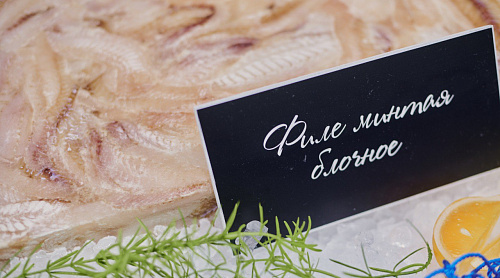Despite the difficult situation in the world, Russia remains one of the main suppliers of white fish to Europe. The mutual interest of European consumers and Russian suppliers of fish products is growing, but its implementation is hindered by the negative expectations of both sides. The new global industry exhibition in Istanbul will help to remove them and agree on mechanisms that will make it possible to secure supplies from external circumstances.
Incentives and Barriers To Trade Development
Last year, the growth in the supply of fish and seafood from Russia to Europe amounted to 18.7%. The total volume of exports increased to 198.8 thousand tons, and its value increased by 57.6%, to €940 million. Slightly less than half of the total volume of fish exports was occupied by cod (47%), the second place was taken by pollock (41%). In value terms, they accounted for 54.7% and 32.3%, respectively. The main importers of Russian cod in Europe were the Netherlands and Poland, and of pollock - Germany. Such data in its review is provided by the All-Russian Association of Fishery Enterprises, Entrepreneurs and Exporters (VARPE).
At the same time, at the beginning of the year, a number of Russian fishing companies reported that new export applications for the supply of walleye pollock and cod were not considered by the European authorities. White fish products caught by Russian ships and processed in China were also under threat. But European consumers have already tasted Russian fish, which is not inferior in quality to American, but much more affordable. The difference in price today is about 800-900 dollars per ton of pollock fillets of primary freezing: 4100-4200 from Russia and about 5000 from the USA, which causes a high demand of the European market for Russian fish products.
Dialogue To Maintain Cooperation
Both consumers and suppliers are interested in continuing and building up cooperation. At the same time, both sides are experiencing negative expectations associated with possible economically unmotivated restrictions. Personal contacts will help to agree on mechanisms that would guarantee uninterrupted supplies. However, last year's dialogue was hampered by both restrictions on the participation of Russian fishermen in the Seafood Expo Global and the decision of some European companies to refuse to travel to the exhibition in St. Petersburg.
This year they have another opportunity to meet - at the new global industry exhibition Seafood Expo Eurasia. It will be held December 7-9 in Istanbul. Its participants will be representatives of more than 120 countries from Europe, Asia, Africa, the Middle East and Latin America. The exposition area will exceed 20,000 square meters, and the Russian national pavilion will become one of the largest. In addition to the opportunity to renew personal contacts, the exhibition in Istanbul will also help participants build an alternative logistics infrastructure and agree on other measures aimed at maintaining the stability of the implementation of the agreements reached.
The European market is an important, but not the only direction for Russian exports of fish products. Already today, the countries of the Asia-Pacific region account for about 60% of the world's consumption of fish products, and this share continues to grow. The Russian industry will again be able to meet with consumers from Asia on October 25-27 at the site of the largest industry exhibition in the Asia-Pacific region, China Fisheries & Seafood Expo in Qingdao. The area of the Russian exposition this year for the first time in history will exceed 1000 square meters.


